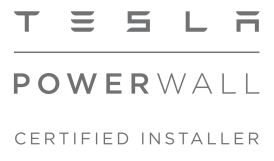Olson Solar were fantastic to work with. From start to finish, they kept us posted on what was going on. Everyone that we dealt with in person was friendly and professional. I also love the fact that they are a local company.
Olson Solar Energy will design a system that is designed to cover 100% – 120% of your current annual electric usage. In some months, you will produce more than you use - when this occurs, your utility provider will credit your account for that usage. This is a credit on your account that you can utilize on days or months that you will produce less than you use. This allows your annual utility bill to balance out to a zero or near-zero balance.
- The solar panel payback period is a calculation that estimates how long it will take for you to “break-even” on your solar energy investment. Increased utility electricity rates and lower equipment costs are making it easier and less expensive for homeowners to own their solar system. Olson Solar Energy usually reports a 7-12 year payback for customers purchasing a solar system.
- Olson Solar Energy uses Tier 1 products exclusively, and although they may be slightly higher priced than some others, they are the best available for your system, always eligible for any available incentive, and all components will come with a 25-year warranty, although testing proves they should last even longer than that.
- Cost of Not going Solar.

In the above sample, if you continued buying electricity from your utility, you would have paid them more than $32,000 over 25 years. By going solar, your electricity costs will become near $0 for the next 25-30 years, and your actual savings will increase each year as you avoid utility rate hikes.
- What is Net Metering:
- Net metering is the system that allows you to store energy in the electric grid. When your solar panels produce more electricity than you need, that energy is sent to the grid in exchange for credits. Then, at night or other times when your solar panels are under producing, you pull energy from the grid and use these credits to offset the costs of that energy.
- With the right size solar energy system, you can produce enough electricity to match your home’s electricity use for the entire year. However, the amount of electricity your solar panels produce will vary throughout the year. Net metering helps you account for these differences by crediting you for the excess electricity your panels produce so you can use it later.
- Solar energy systems typically hit peak electricity production in the afternoon, when many people aren’t home using electricity. By contrast, home electricity use is typically higher in the mornings and evenings. Net metering helps you to account for these ups and downs in your day-to-day electricity production and usage.













